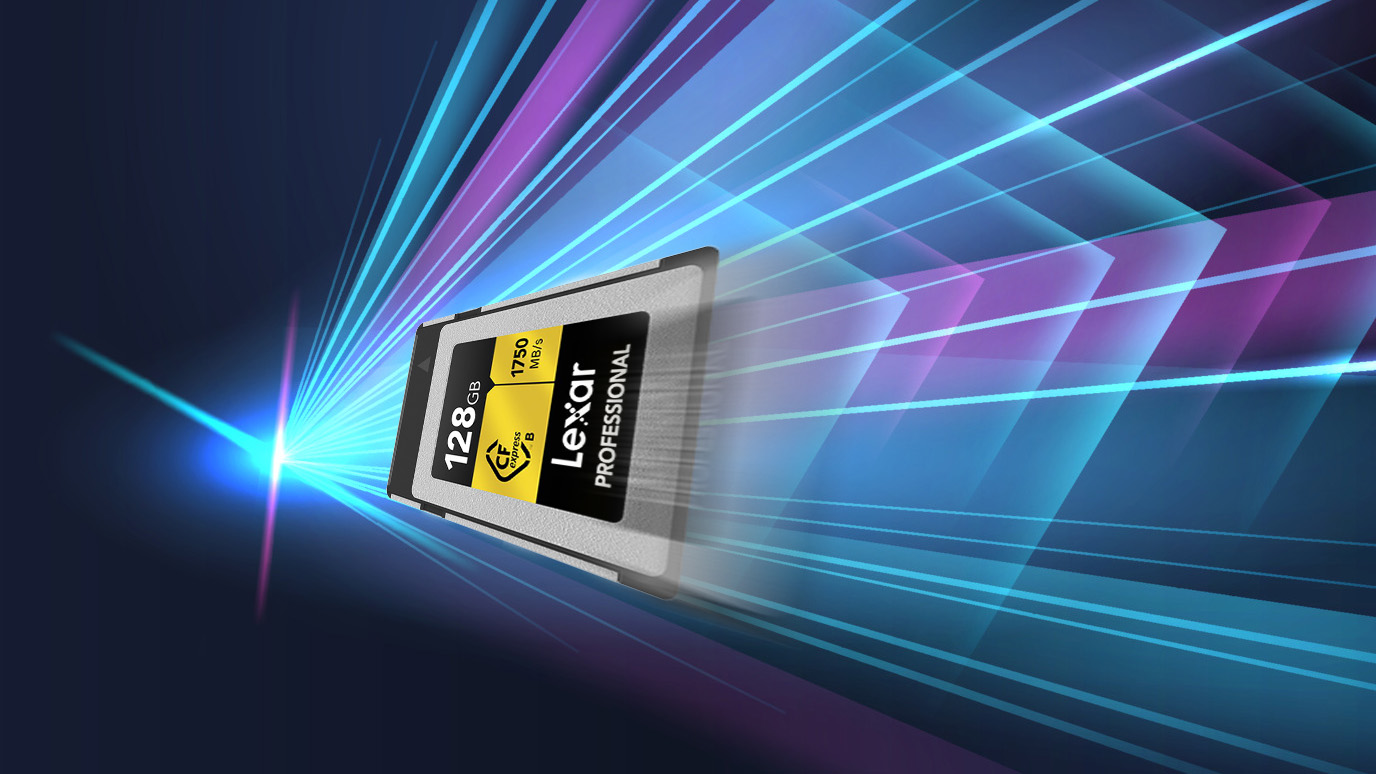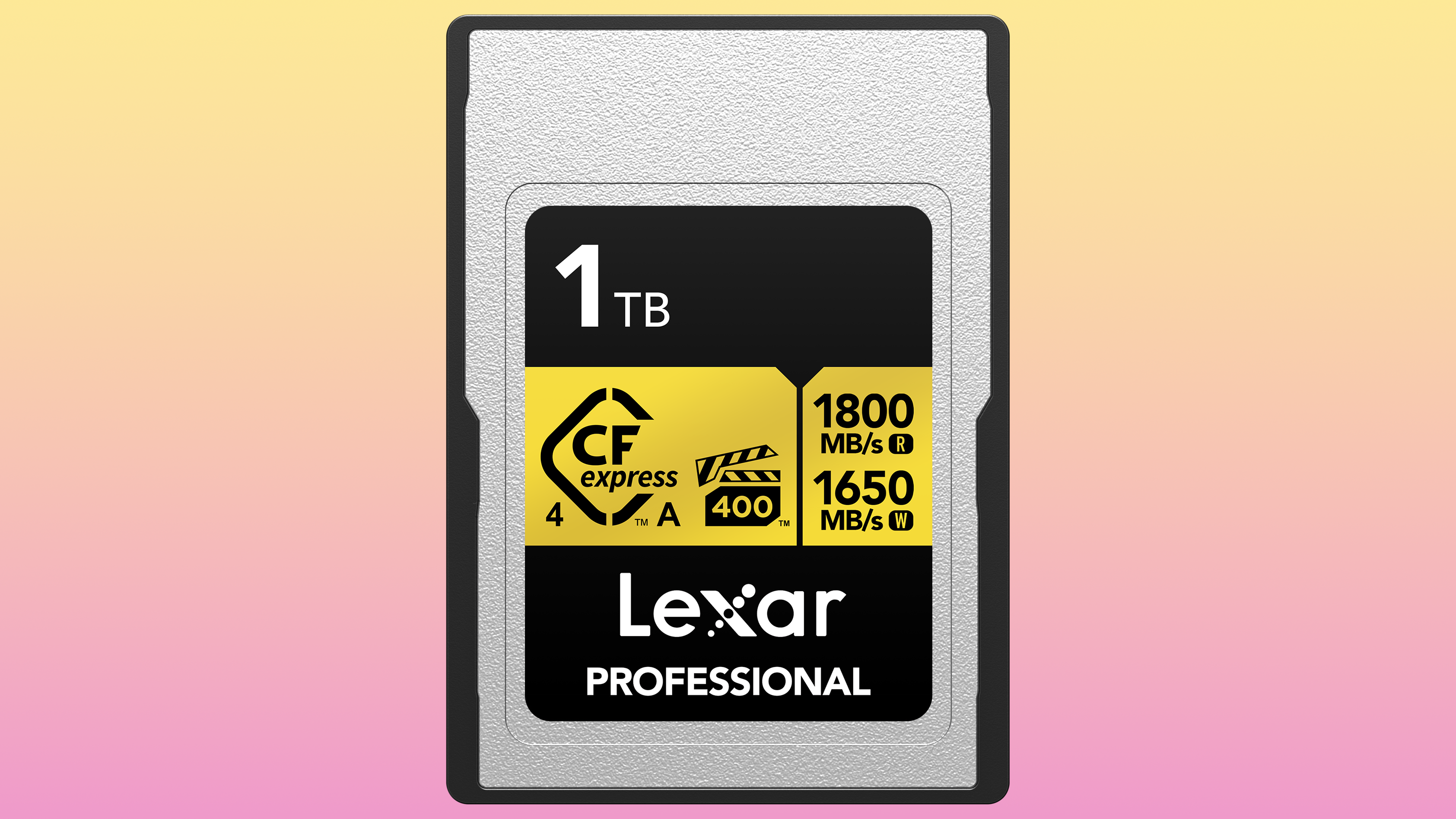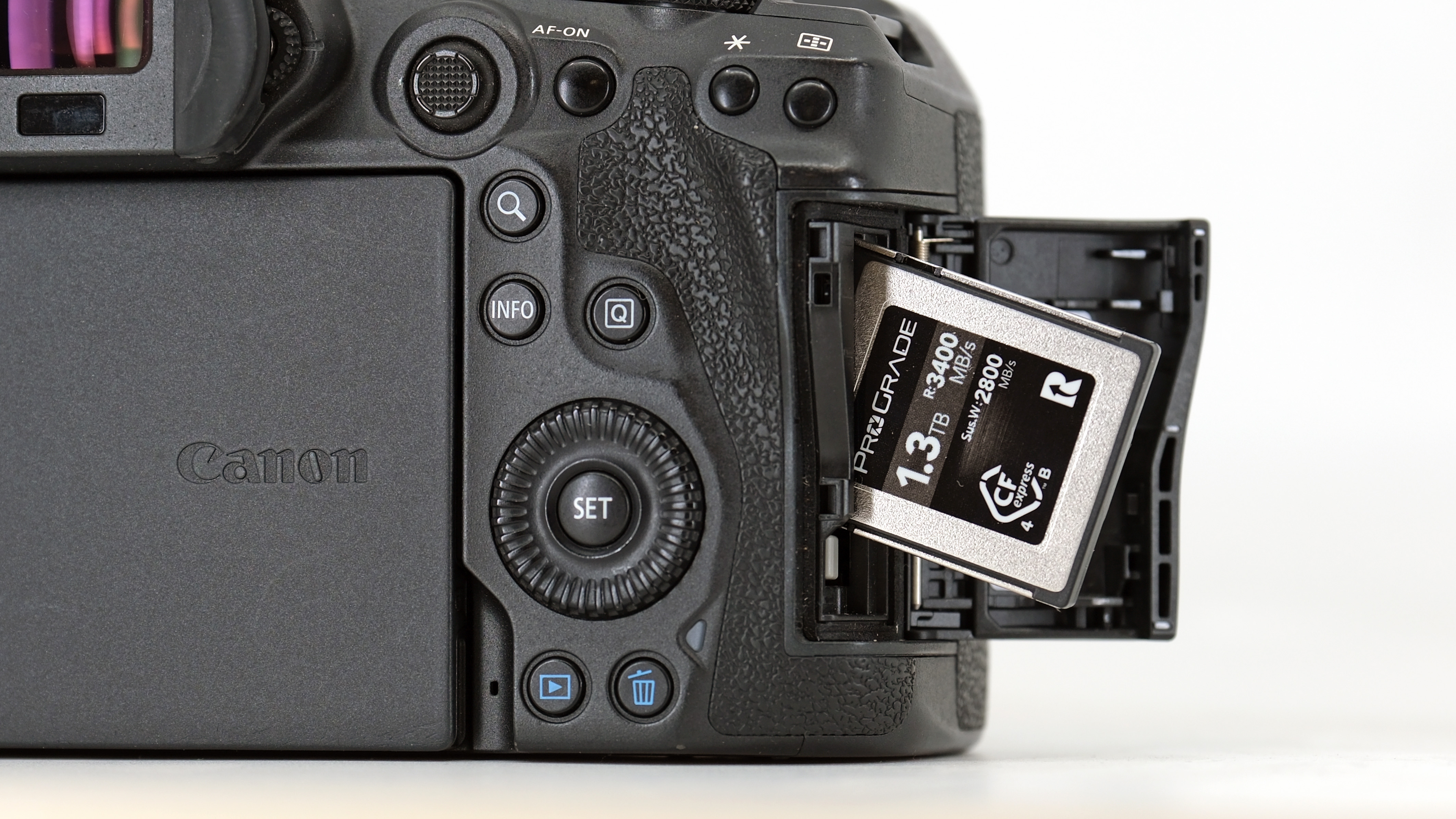No camera manufacturer supports CFexpress 4.0 cards, but it doesn't matter!
The latest generation of mega CFexpress cards are fast enough to bend space and time, yet are totally unnecessary

CFexpress is still the hottest memory card format on the market, and the most sizzling cards are those built to the CFexpress 4.0 standard. Compared to the last generation (CFexpress 2.0 - there was no 3.0), CFexpress 4.0 cards are twice as fast, with Type B cards topping out at around 3,600MB/s read speed, while write speeds are nudging 3000MB/s.
CFexpress 4.0 Type A cards should also be available soon, as we've seen Lexar announce Type A 4.0 cards at CES, while Nextorage had examples of its Type A 4.0 cards at the CP+ trade show - see video below. Both Type A cards are likely to offer around double the speed of today's offerings, meaning read/write speeds should top out at around 1600-1800MB/s.

German youtuber Valuetech gleaned some more information about Nextorage's CFexpress 4.0 Type A cards during the CP+ show. Judging by the increased size of its new Type A card reader, he speculated that the new 4.0 cards may generate more heat than the current (2.0) generation of Type A cards. Furthermore, after speaking to a camera manufacturer (presumably Sony, as only Sony uses Type A cards at present), it was revealed that no camera will support Type A 4.0 cards for the foreseeable future.
We can't definitively say whether CFexpress 4.0 cards produce more heat than previous 2.0-generation cards. However it would make theoretical sense for a card that's running twice as fast to generate additional heat, with Type A cards being particularly susceptible. These are significantly smaller than Type B cards, and therefore have little room for heat spreaders. We've recently been testing a Type A 2.0 card, and even this became uncomfortably hot to the touch after being benchmarked for several minutes. But that's in the context of an unrealistically extreme synthetic test. When used in a camera, in a real-world shoot operating at more modest speeds, heat output is likely to be more manageable.

And this more modest speed leads into the second point: camera compatibility. The assertion that CFexpress 4.0 cards will not be supported by any cameras for a while isn't quite as remarkable as it first seems. Gen 4.0 is still backward-compatible with the 2.0 standard, so such a card would still operate in a current CFexpress camera, just not at 4.0 speeds.
What's more, this presents absolutely no practical problem. We recently reviewed a Type B 4.0 card from ProGrade Digital, which performed immensely well. But doing some digging during this review revealed that there's a good reason why camera manufacturers don't support version 4.0 yet: there's simply no need. Current CFexpress 2.0 cards are more than fast enough for anything you could throw at them. Take, for example, a Canon EOS R5 recording 8K video at its maximum RAW quality setting - a worst-case scenario for a memory card, demanding a bit-rate of 2600Mbps. But even this torture test only requires a Type B card that can sustain a (relatively) modest 325MB/s - little more than 10% of the write speed offered by the new crop of Type B 4.0 cards.
So given that no practical, in-camera test would require a CFexpress 4.0 card to even get close to its maximum speed, heat build-up should therefore be controllable. And a lack of official support for 4.0 cards by camera manufacturers is both understandable and a complete non-issue in practical terms.
Get the Digital Camera World Newsletter
The best camera deals, reviews, product advice, and unmissable photography news, direct to your inbox!
Ben is the Imaging Labs manager, responsible for all the testing on Digital Camera World and across the entire photography portfolio at Future. Whether he's in the lab testing the sharpness of new lenses, the resolution of the latest image sensors, the zoom range of monster bridge cameras or even the latest camera phones, Ben is our go-to guy for technical insight. He's also the team's man-at-arms when it comes to camera bags, filters, memory cards, and all manner of camera accessories – his lab is a bit like the Batcave of photography! With years of experience trialling and testing kit, he's a human encyclopedia of benchmarks when it comes to recommending the best buys.


